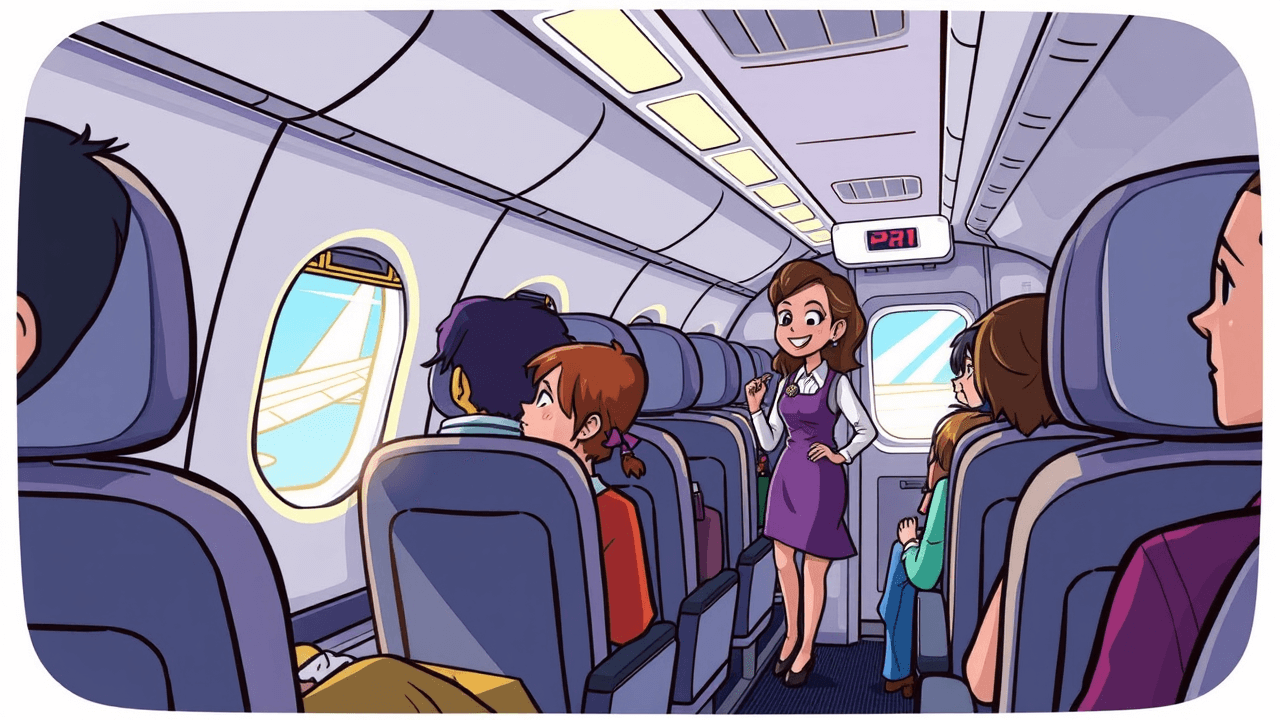Why Do Airlines Make You Keep Your Window Shades Up?
Ever boarded a plane and suddenly found yourself blinded by the sun? Or maybe you’ve been asked to open or close your window shade without really knowing why. It’s one of those quirky airplane rules that leaves many passengers puzzled. So, why do airlines have different policies on window shades? Let’s dive into the fascinating reasons behind these rules and how they affect both safety and comfort during your flight.
It’s All About Safety
One of the most common reasons airlines ask you to keep your window shades up, especially during takeoff and landing, is safety. This is known as “situational awareness.” But what does that mean in the context of flying? Imagine something happens outside the plane—a fire on the wing, for example. If your window shade is open, you’re able to see the problem and react immediately.
In many ways, having the shades open gives the passengers extra sets of eyes. It’s not just the pilots and flight attendants who can monitor what’s happening. In some cases, passengers have even noticed issues that the crew missed. So, in this sense, open window shades could help keep everyone safer by allowing people to stay aware of their surroundings.
Helping Emergency Teams
There’s another safety benefit: emergency teams on the ground. When they can see inside the cabin through the windows, they know what they’re dealing with and can act faster if something goes wrong. This gives them a head start, which can be critical in an emergency situation. So, in many cases, the rule about keeping your window shade open isn’t just for you—it’s for the safety of everyone onboard and those working to protect you.
But What About Comfort?
On the other hand, some airlines, especially in hot regions like Arizona or Texas, actually prefer you keep the shades down. Why? It comes down to temperature control. Before the plane’s air conditioning kicks in, the cabin can get really hot—sometimes over 90 degrees! Keeping the window shades down helps prevent the cabin from heating up too much before takeoff.
It’s not just about making the passengers comfortable, though. Extreme heat can mess with the plane’s systems, so it becomes a delicate balance between keeping everyone cool and ensuring the plane is functioning properly. Comfort and safety are constantly at odds in situations like these, and sometimes the weather wins.
The Red-Eye Flight Dilemma
If you’ve ever been on a red-eye flight, you might have noticed that airlines often ask you to keep the shades closed. This is mostly to help passengers sleep. The cabin is kept dark, tricking your brain into producing melatonin, the hormone that signals it’s time to sleep. Even if it’s daylight outside, the darkness inside the plane can help your body adjust, making it easier to deal with jet lag once you land.
Is There a Rule for Window Shades?
You might think there’s a strict rule about window shades being up or down, but surprisingly, there isn’t! The Federal Aviation Administration (FAA) doesn’t have a set rule about window shades during takeoff and landing. Instead, it’s left up to individual airlines to decide what they prefer. Some airlines are strict about keeping shades up for safety, while others are more flexible and prioritize passenger comfort.
Should We Be More Proactive?
This raises an interesting question: should we, as passengers, be more proactive about keeping our window shades up? After all, if those shades are our only way to see what’s going on outside, maybe we should be paying closer attention. In some cases, passengers have spotted issues with the plane’s exterior that the crew hadn’t noticed. One person even saw a loose panel on the wing and reported it, which led to the plane being grounded for repairs.
It’s a bit scary but also kind of empowering to think that what we see—or don’t see—could help prevent something bad from happening.
How Do Airlines Decide?
It’s clear that open window shades are helpful for safety, but they can also cause discomfort, especially in terms of heat and light. Airlines have to weigh these factors when making decisions about their window shade policies. Some airlines are strict about keeping the shades open, while others leave it up to the passengers or crew to decide based on the situation.
Communication is Key
What happens when passengers want comfort, but pilots are focused on safety? It’s a tricky balance. We’ve all been on flights where the flight attendant asks us to open or close the shade, and there’s sometimes tension around it. There was even a story about a pilot who got upset because passengers wouldn’t close their shades during a red-eye flight. A little communication might have gone a long way in helping passengers understand the reasoning behind these requests.
Frequently Asked Questions (FAQ)
Why do airlines ask to keep window shades open during takeoff and landing?
Airlines often ask passengers to keep window shades open during takeoff and landing for safety reasons. Open shades provide better visibility for both passengers and the crew, which can help identify issues like fires or other problems outside the plane.
Is there a rule that mandates window shades must be up or down?
No, there’s no strict rule from the FAA about window shades being up or down. Individual airlines decide their own policies, and these may vary depending on the situation, such as time of day or temperature.
Does keeping the shades down help with jet lag?
Yes, keeping the window shades down on red-eye flights can help passengers sleep by tricking the brain into thinking it’s nighttime, thanks to the darkness in the cabin. This can help your body adjust to different time zones more easily.
What happens if a passenger notices something wrong outside the window?
If a passenger sees something unusual or dangerous outside the window, they should alert the flight attendants immediately. In some cases, passengers have noticed issues like loose panels or other problems that required attention.
Do airlines prioritize comfort or safety when it comes to window shade policies?
Airlines try to balance both comfort and safety. For example, in hot regions, keeping shades down helps with temperature control, but for takeoff and landing, many airlines prefer shades up for better visibility and safety.
Your Hosts

Alex & Maria
Join Alex Thompson and Maria Davis as they navigate the fascinating world of knowledge. With their combined expertise and passion for learning, they simplify the complex and make every episode a journey worth taking.

